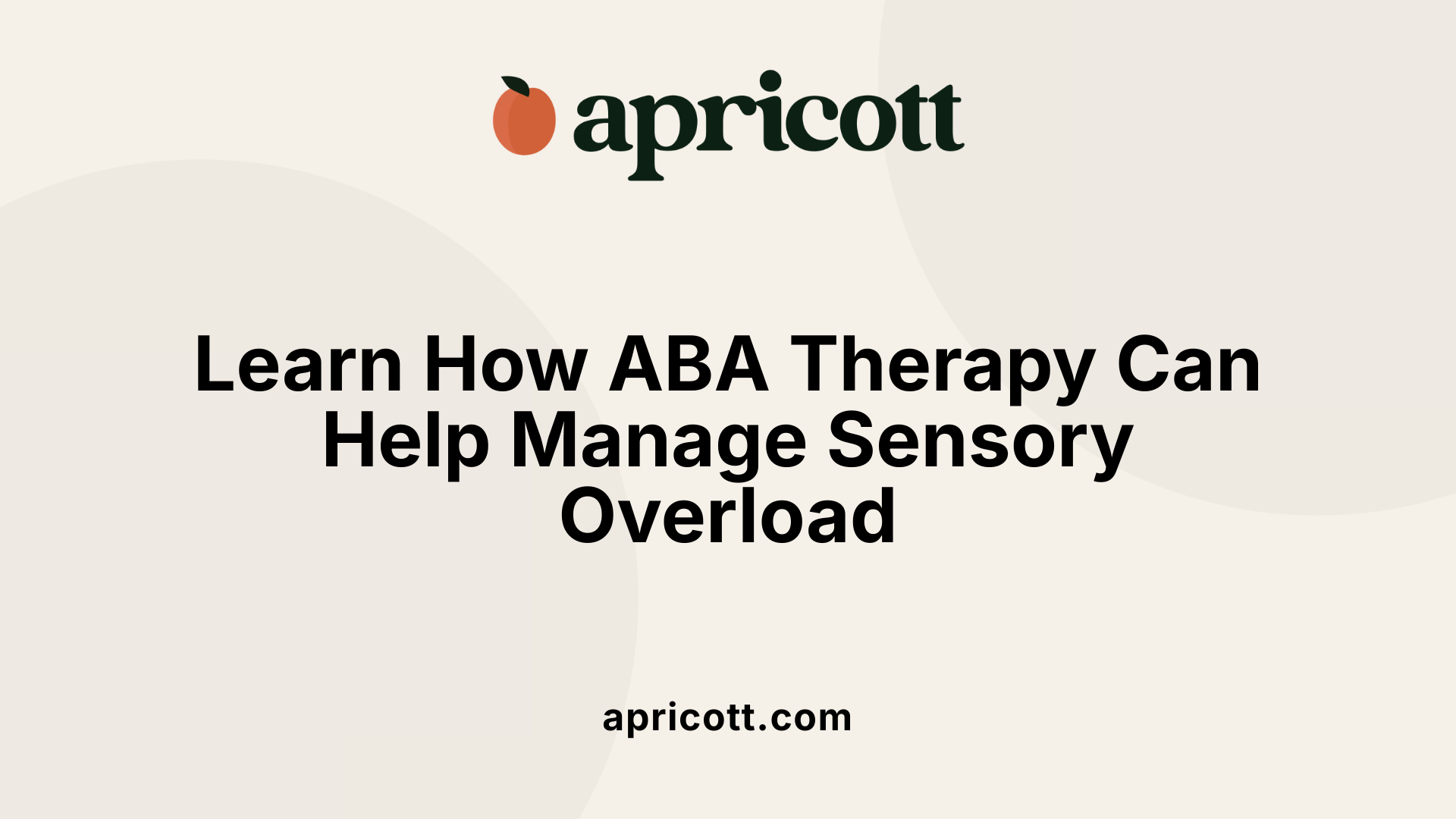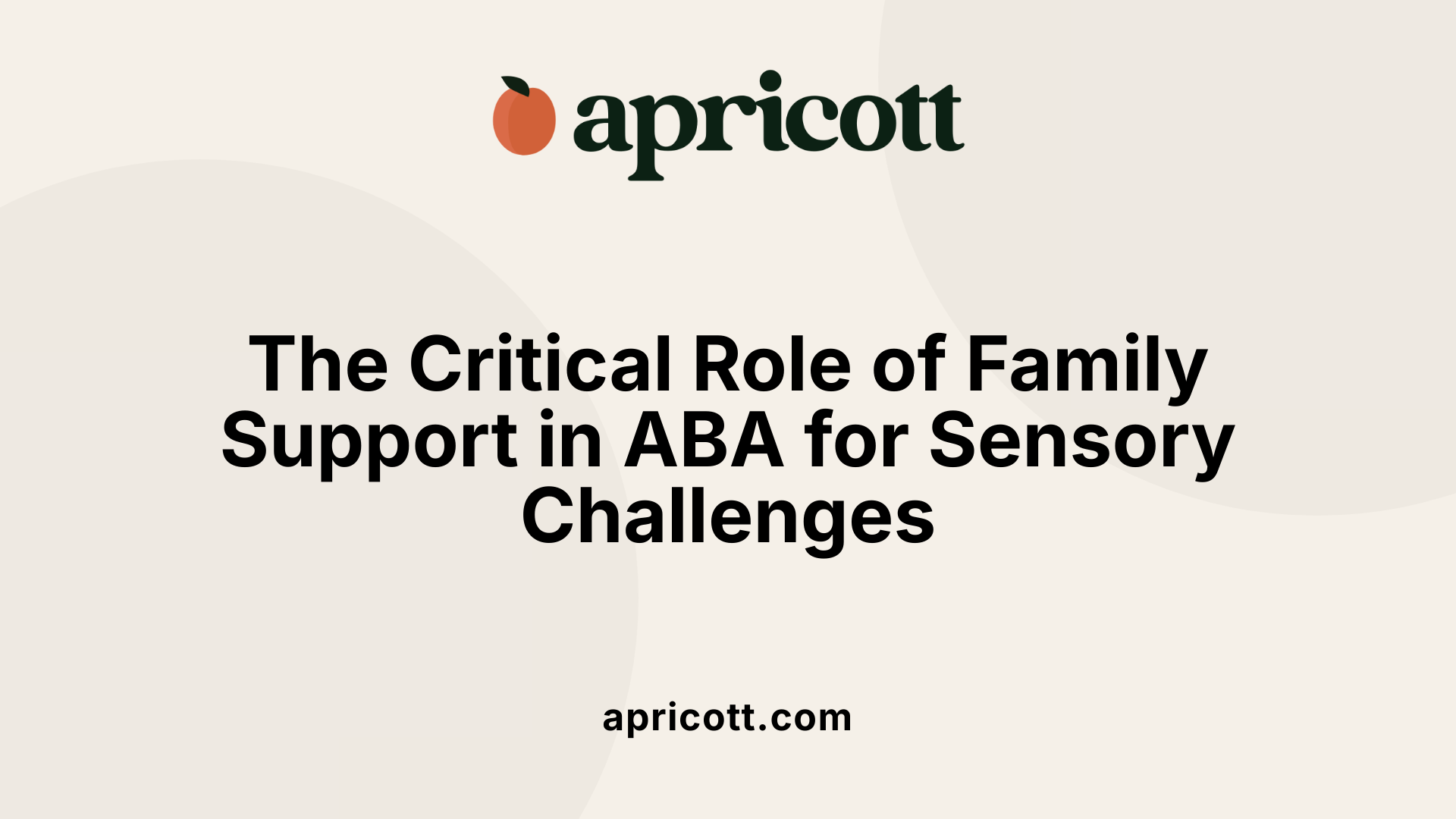December 2, 2025
Understanding and Managing Sensory Overload in Autism Spectrum Disorder
Sensory overload, often experienced as overstimulation, is a common challenge for individuals with autism spectrum disorder (ASD). This occurs when the brain is overwhelmed by more sensory input than it can process effectively, involving stimuli such as bright lights, loud noises, or crowded environments. Understanding the causes, signs, and management strategies of sensory overload is essential to improving quality of life for autistic individuals and their families. This article explores the neurological basis of sensory overload, its manifestations, and therapeutic interventions, including the role of Applied Behavior Analysis (ABA) therapy, to provide comprehensive support for those affected.
Sensory overload occurs when an individual receives more sensory input than their brain can effectively process. This excess input can come from stimuli such as bright lights, loud noises, crowded spaces, or complex information.
Children with autism often experience overload triggered by sounds, lights, textures, and social interactions. Environmental factors like noisy settings, fluorescent lighting, and tactile sensations can overwhelm their sensory systems easily.
Research indicates that children with autism show atypical brain responses to sensory stimuli, including weaker habituation and altered processing in areas like the amygdala. These neurological differences mean their brains have trouble filtering and adapting to sensory information, leading to greater sensitivity.
Overstimulation in autism is multifaceted and includes visual, auditory, tactile, olfactory, gustatory, cognitive, and emotional types. Each affects autistic individuals differently, contributing to challenges in daily functioning.
Studies estimate that over 90% of children with autism display atypical sensory behavior such as hypersensitivity or hyposensitivity. Sensory processing disorder is common in this group, often leading to sensory overload.
Overall, sensory overload in autism arises from a combination of heightened sensory inputs and underlying neurological processing differences. Understanding these causes helps in developing supportive strategies and environments for affected individuals.

Sensory overload often presents through noticeable behavioral changes. Individuals may become irritable or emotionally out of sorts, occasionally withdrawing from social situations or activities. In children with autism, repetitive motions or vocalizations may increase as a response to overwhelming sensory input.
Physical symptoms are common during sensory overload. Individuals might experience headaches, eye strain, or muscle tension. Physiological responses such as rapid or shallow breathing and an elevated heart rate also occur, reflecting the body's stress response to excessive sensory stimuli.
Emotionally, sensory overload can lead to heightened anxiety, irritability, and challenges in maintaining focus or concentrating. These emotional symptoms intermingle with physical discomfort, compounding distress.
Children with autism frequently face sensory overstimulation from sounds, lights, and textures, as well as social interactions. They may cover their ears or eyes, exhibit restlessness, or refuse certain foods or clothing due to sensory sensitivities.
When the brain becomes overwhelmed and cannot filter sensory information effectively, it may result in meltdowns — intense emotional and behavioral responses — or shutdowns, where the child withdraws and becomes nonresponsive. These reactions serve as mechanisms for the autistic brain to reset and manage sensory overload.
| Symptom Type | Examples | Notes |
|---|---|---|
| Behavioral | Irritability, withdrawal, repetitive actions | Often the first noticeable signs in children |
| Physical | Headaches, elevated heart rate, muscle tension | Linked to stress and sensory overactivation |
| Emotional | Anxiety, difficulty concentrating | Frequently accompanied by irritability |
| Autism-Specific | Covering ears/eyes, refusing textures or foods | Reflects pronounced sensory sensitivities |
| Overload Effects | Meltdowns, shutdowns | Protective responses to overwhelming stimuli |
Applied Behavior Analysis (ABA) therapy is an evidence-based treatment approach that focuses on understanding and improving specific behaviors, especially for individuals with autism. It is grounded in the science of learning and behavior. The main goal of ABA is to help individuals develop social, communication, and daily living skills through careful analysis and modification of behaviors influenced by their environment.
ABA therapy evaluates how environmental factors trigger or reinforce certain behaviors. By identifying clear relationships between stimuli and responses, therapists can develop strategies that encourage positive behaviors while reducing those that might be harmful or disruptive. This analytical approach helps create targeted interventions tailored to everyday situations and individual needs.
ABA employs various techniques to promote learning and behavioral change. Positive reinforcement is a core method where desirable behaviors are rewarded, increasing the likelihood that they will continue. Another common technique is Discrete Trial Training (DTT), which breaks down skills into small, manageable parts and teaches them systematically through repetition and clear instructions. Other strategies include prompting, shaping, and naturalistic teaching methods that encourage skill use in real-life contexts.
Every ABA program is designed to fit the unique strengths, challenges, and goals of each individual. Initial assessments help identify target behaviors and skills. Throughout therapy, ongoing data collection measures progress, allowing therapists to tweak strategies to maximize effectiveness. This continuous evaluation ensures that interventions remain relevant and responsive to the person's evolving needs.
ABA therapy supports individuals with autism in gaining essential abilities needed for increased independence and quality of life. It addresses social skills like interacting with peers, communication skills such as requesting or expressing feelings, and daily living tasks including dressing, personal hygiene, and following routines. These improvements help individuals better adapt to sensory challenges and environmental demands often encountered in their everyday lives.

ABA therapy begins by developing personalized behavioral plans tailored to each child's unique sensory sensitivities. These plans identify specific triggers and outline strategies to minimize exposure to overwhelming stimuli, enabling better management of sensory inputs.
A core component of ABA is teaching children self-regulation skills. Through guided practice, children learn coping methods such as deep breathing, using fidget tools, or requesting breaks, which empower them to handle sensory overload more effectively.
ABA promotes establishing consistent routines and structured environments that reduce unexpected sensory triggers. Such predictability helps children anticipate daily events, lowering anxiety and preventing overstimulation.
By integrating sensory supports like weighted blankets, noise-canceling headphones, or visual schedules, ABA therapy addresses sensory needs directly. These interventions are carefully incorporated into sessions to promote comfort and focus.
Consistent application of ABA strategies helps diminish the emotional and behavioral distress caused by sensory overload. Over time, children often show reduced irritability, fewer meltdowns, and improved concentration, enhancing their overall well-being.
ABA therapy is typically provided by professionals such as Board Certified Behavior Analysts (BCBAs), licensed behavior therapists, and other specialists trained in behavioral analysis.
Professionals must complete rigorous supervised fieldwork gaining hands-on experience. State licensing often requires proof of certification and adherence to ethical codes.
ABA providers commit to strict ethical guidelines to ensure effective, respectful treatment. Ongoing continuing education is essential to stay updated on best practices.
Therapists work closely with families and coordinate with other specialists, such as speech therapists or occupational therapists, to provide comprehensive care tailored to each individual.
| Provider Type | Education Needed | Certification/License | Role in Therapy |
|---|---|---|---|
| Board Certified Behavior Analyst (BCBA) | Master's degree in ABA-related field | BACB Certification | Design and supervise ABA programs |
| Licensed Behavior Therapist | Relevant bachelor's or master's degree | State license (varies) | Implement therapy plans under supervision |
| Other Specialists | Varies by discipline | Varies | Support digital teams and collaborate |
This combination of education, certification, supervised experience, ethical practice, and collaboration ensures that ABA therapy is delivered effectively and responsibly.
Applied Behavior Analysis (ABA) therapy is grounded in behavioral science. It uses principles like positive reinforcement to encourage desired behaviors and reduce problematic ones. ABA programs rely heavily on data collection to monitor progress and adjust strategies systematically.
Unlike ABA, occupational therapy (OT) focuses mainly on improving sensory processing, motor skills, and daily living activities. Speech therapy centers on developing language and social communication skills through play and natural interactions. Both OT and speech often use less structured, more activity-based approaches compared to ABA.
ABA distinctly targets measurable changes in behavior, teaching specific skills such as communication, social interaction, and self-care. Its personalized programs are tailored and modified based on continuous data analysis, ensuring clear objectives and outcomes.
A hallmark of ABA is its data-driven, individualized approach. Board-certified behavior analysts (BCBAs) design and monitor programs with careful tracking of behaviors and progress. This allows for precise adjustments and maximizes therapy effectiveness.
While ABA has a unique framework, it is often used alongside therapies like OT and speech therapy. Combining these approaches addresses different aspects of an individual's needs, providing comprehensive support for skill development and sensory challenges.

Families play a vital role in the success of Applied Behavior Analysis (ABA) therapy, especially for children experiencing sensory overload. Their active participation ensures that strategies learned during therapy sessions are reinforced consistently across home and community environments. This consistency is crucial for helping children generalize skills and apply coping mechanisms beyond the therapy setting.
Parental training is a cornerstone of effective family involvement. Through regular collaboration with therapists, parents learn how to recognize sensory overload signs and implement tailored interventions. This collaborative approach allows for adaptations that align the therapy with the child's unique sensory needs and strengths, improving overall responsiveness and reducing distress caused by overstimulation.
Managing caregiver stress and addressing barriers such as fatigue, time constraints, or lack of resources is also essential. Support for parents and caregivers—including respite care, support groups, and self-care strategies—helps sustain their engagement and effectiveness in the therapy process.
Moreover, family involvement promotes the generalization of skills across various environments, making therapy outcomes more sustainable. When children encounter predictable and sensory-friendly settings at home that reflect therapeutic recommendations, they are better equipped to manage sensory overload and improve their daily functioning.
In summary, family engagement enhances ABA therapy outcomes by fostering a collaborative, consistent, and supportive environment that addresses sensory overload challenges holistically. This partnership between therapists and families is key to maximizing the child's progress and quality of life.

Creating calm, organized environments is essential for managing sensory overload, especially for individuals with autism spectrum disorder (ASD). Reducing visual clutter, using darker or softer lighting, and designing sensory-neutral spaces helps lower the risk of overstimulation. Sensory-friendly areas allow individuals to feel safe and focused.
Relaxation exercises, such as deep breathing and mindfulness, are effective methods to reduce emotional distress and anxiety caused by sensory overload. These techniques encourage self-regulation and can be easily incorporated into daily routines to help manage responses to overwhelming stimuli.
Sensory aids are valuable tools for providing calming sensory input or redirection during overload episodes. Fidget toys engage tactile senses gently, while weighted blankets offer deep pressure therapy, helping to soothe and stabilize sensory processing.
Sensory Integration Therapy (SIT), led by trained occupational therapists, exposes individuals to specific sensory stimuli in a controlled, gradual manner. This therapy aims to reduce hypersensitivity and improve the brain’s ability to process sensory input, leading to increased comfort and better functioning.
After experiencing sensory overload, individuals often require time to recover, which can range from minutes to hours. Calming activities like quiet time alone, engaging in preferred hobbies, or using sensory aids support the brain’s reset process and help alleviate lingering symptoms.
In some cases, medications such as antipsychotics (e.g., Abilify, Risperdal) or ADHD treatments (e.g., Ritalin) may be prescribed to address symptoms related to sensory overload. Medication is typically one component of a comprehensive management plan tailored to the individual's needs.
Sensory overload presents significant challenges for many individuals with autism, impacting emotional well-being, behavior, and daily functioning. Through a better understanding of its causes and manifestations, families and professionals can implement effective strategies to reduce overstimulation and promote self-regulation. Applied Behavior Analysis (ABA) therapy plays a critical role in teaching coping skills, improving behavior, and creating supportive environments tailored to individual needs. The involvement of qualified professionals and engaged families ensures that interventions are not only effective but also compassionate and sustainable. Combining behavioral therapy with sensory management techniques and supportive care enhances quality of life and enables autistic individuals to navigate their worlds with greater resilience and confidence.